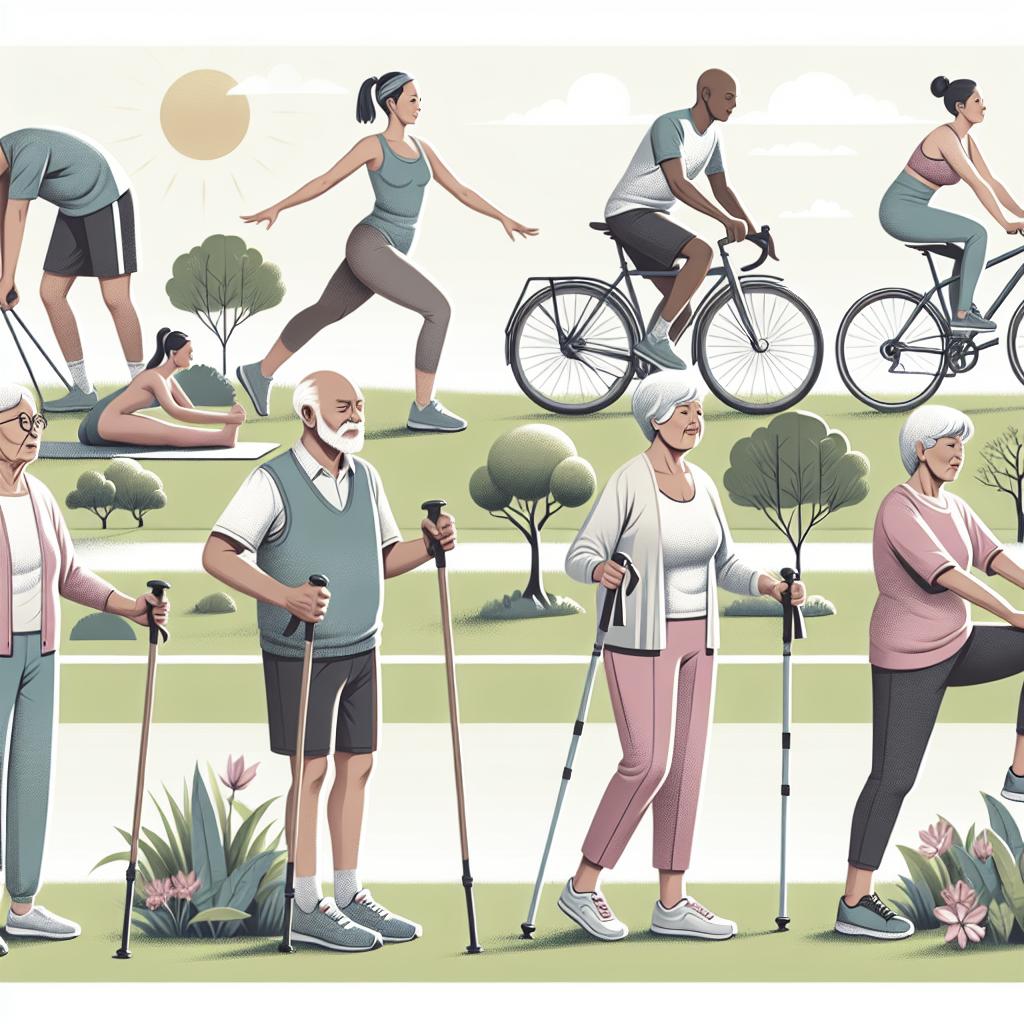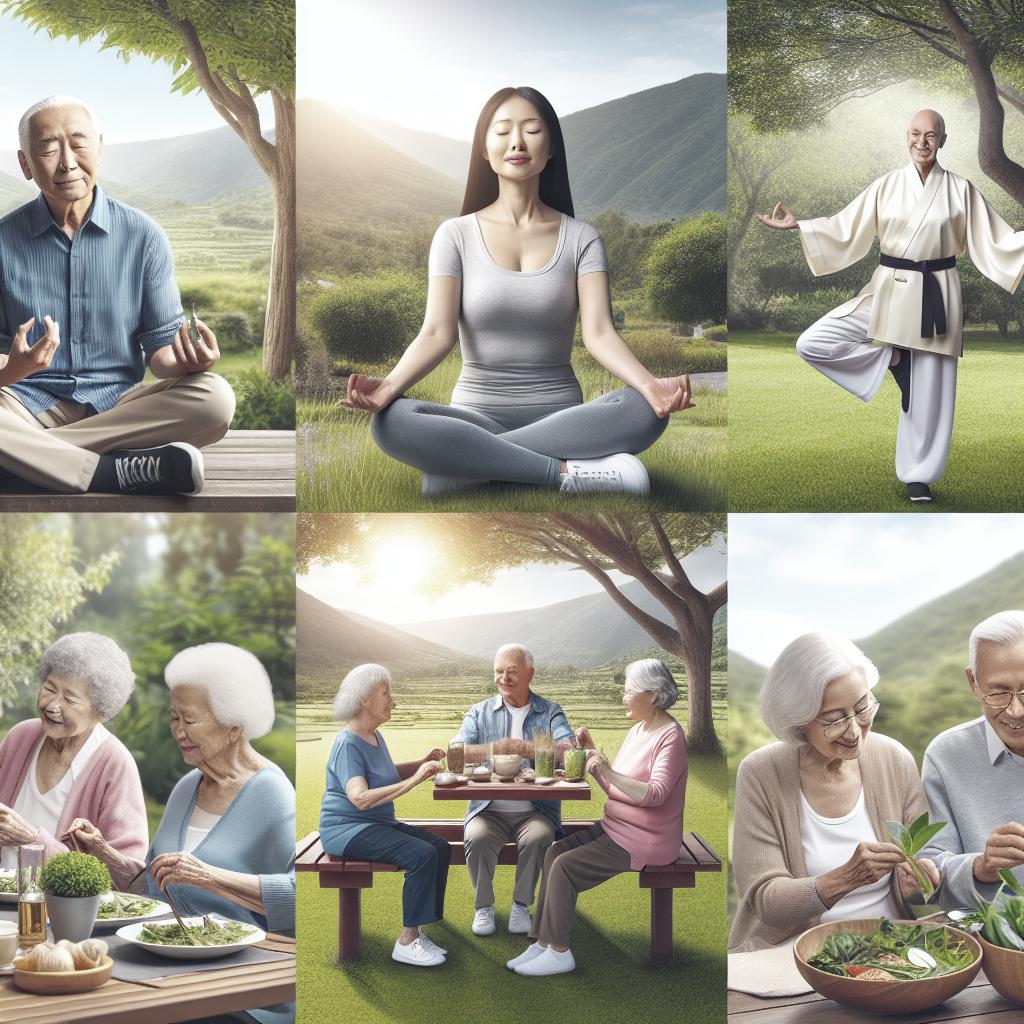<>
As society advances and lifespans increase, maintaining physical fitness has become increasingly important, particularly for the elderly. Choosing the right types of exercises can not only enhance the quality of life but also prevent age-related issues. In this article, we will explore various forms of physical activity suitable for elderly individuals, categorized by intensity: light, moderate, and vigorous. Each category offers unique benefits, making it important to match exercises to the individual’s capabilities and health status. Additionally, we’ll delve into muscle-strengthening activities specifically beneficial to seniors and outline general physical activity recommendations for other age groups. Providing this comprehensive overview aims to arm our readers with the knowledge essential for making informed exercise choices, ultimately promoting a healthier and more active aging process.
What counts as light activity?
Light activities are essentially everyday actions that require minimal physical effort but still contribute to overall health. For many elderly individuals, starting with light activities can be both manageable and beneficial. One of the primary examples is walking at a slow pace. A leisurely stroll can promote cardiovascular health, improve mood, and even aid digestion. Gardening is another excellent light activity. The act of planting, weeding, and watering can provide a mixture of movement and fresh air, offering complexity without being too demanding. Housekeeping tasks like dusting, sweeping, or even doing laundry also fit into this category, ensuring that daily living includes a certain level of physical engagement. These activities might not make you sweat, but they keep the body moving and active, contributing to a better quality of life. Light activities are often underestimated but can serve as the foundation upon which more intense exercises are built.
What counts as moderate intensity activity?
Moderate intensity activities require a bit more effort than light activities, characterized by a slight increase in heart rate and breathing. These are suitable for elderly individuals who have built up some level of fitness and are ready to push their limits a bit more. Brisk walking, often recommended by health professionals, can be easily integrated into daily routines. It’s a step up from a leisurely stroll and helps in managing weight, improving cardiovascular health, and boosting mood. Swimming is another excellent choice. The buoyancy of the water reduces strain on joints, making it a perfect exercise for those with arthritis or joint issues. Cycling on a stationary bike also counts as moderate intensity, offering a safe way to get the heart pumping without excessive strain. Engaging in these activities regularly can significantly benefit the heart, lungs, and muscles, providing a balanced approach to overall well-being. They help in maintaining independence and a better quality of life, addressing several age-related health challenges.
What counts as vigorous intensity activity?
Vigorous intensity activities are more demanding and are generally suitable for those elderly individuals who have maintained a high level of fitness or have been physically active throughout their lives. These exercises significantly increase heart rate and breathing and should be approached with caution. Jogging or running, if health permits, can be an excellent way to maintain cardiovascular fitness and muscle strength. Water aerobics offers a vigorous yet low-impact alternative, benefiting those with joint issues while still providing a challenging workout. Dancing, especially faster-paced styles like salsa or aerobics-based dance classes, also counts as vigorous activity. These activities often combine fun with physical exertion, making the exercise feel more like a social event. It’s crucial for elderly individuals engaging in vigorous activities to consult healthcare providers to ensure these exercises are safe. The benefits, however, include improved physical stamina, better heart health, and a general boost in energy levels.
What activities strengthen muscles?
Muscle-strengthening activities are critical for maintaining muscle mass, which tends to decline with age, leading to frailty and an increased risk of falls. Resistance training using weights or resistance bands is highly effective. These exercises can be done at home or in a gym setting, and they help in building muscle mass, improving bone density, and enhancing metabolic rate. Simple exercises like squats, lunges, and bicep curls can be modified to match various strength levels, making them accessible for most elderly individuals. Another excellent method is yoga, especially forms that incorporate strength poses. Chair yoga can be particularly beneficial, combining flexibility and muscle-strengthening exercises in a low-impact manner. Tai chi also offers muscle-strengthening benefits along with improvements in balance and flexibility, making it invaluable for fall prevention. Incorporating muscle-strengthening activities into a weekly routine can significantly enhance physical health, making everyday tasks more manageable and reducing the risk of injuries.
Physical activity recommendations for other age groups:
While this article focuses on the elderly, it’s equally important to acknowledge that physical activity is essential across all age groups, albeit with varying guidelines. For children and adolescents, the emphasis is on incorporating 60 minutes of moderate to vigorous physical activity every day. This can include anything from playing sports to cycling and running. The goal is to build a habit of regular exercise that promotes growth, strong bones, and cardiovascular health. For adults aged 18-64, the guidelines typically recommend at least 150 minutes of moderate-intensity or 75 minutes of vigorous-intensity aerobic activity per week, combined with muscle-strengthening exercises on two or more days a week. Adults often have busier lives, making it essential to find sustainable and enjoyable activities to maintain long-term health. For pregnant and postpartum women, the focus shifts slightly to include activities that are more moderate in intensity but still maintain fitness levels. Walking, swimming, and prenatal yoga are often recommended, along with muscle-strengthening activities that are safe for both mother and baby. Understanding these varied recommendations ensures that individuals can adapt their exercise routines as they age, promoting lifelong fitness and health.
Lessons learned
Here’s a summarized view of the different forms of exercise suitable for various age groups and their benefits in an organized HTML table: “`
| Exercise Category | Examples | Benefits |
|---|---|---|
| Light Activity | Walking at slow pace, Gardening, Housekeeping | Improves mood, cardiovascular health, and overall mobility |
| Moderate Intensity Activity | Brisk walking, Swimming, Cycling | Enhances cardiovascular health, boosts mood, and maintains weight |
| Vigorous Intensity Activity | Jogging, Water aerobics, Dancing | Improves physical stamina, heart health, and energy levels |
| Muscle-Strengthening Activities | Resistance training, Yoga, Tai chi | Builds muscle mass, improves bone density, and enhances metabolic rate |
| Children and Adolescents (6-17 years) | Playing sports, Cycling, Running | Promotes growth, strong bones, and cardiovascular health |
| Adults (18-64 years) | Moderate aerobic activity, Muscle-strengthening exercises | Maintains long-term health, cardiovascular fitness, and muscle strength |
| Pregnant and Postpartum Women | Walking, Swimming, Prenatal yoga | Maintains fitness, promotes healthy pregnancy, and supports postpartum recovery |
“` By understanding and integrating these exercise routines appropriately, elderly individuals and those in other age groups can significantly improve their health and well-being, leading more active and fulfilling lives.


